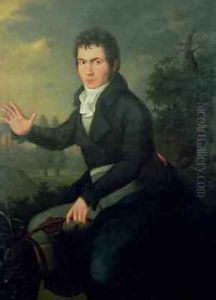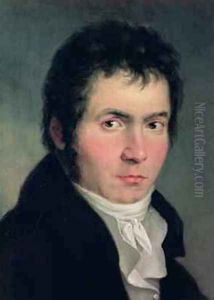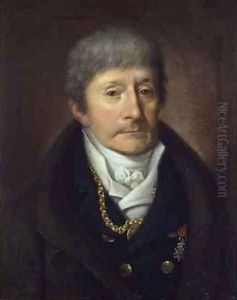Willibrord Joseph Mahler or Maehler Paintings
Willibrord Joseph Mähler, alternatively spelled Maehler, was an Austrian portrait painter known for his work during the late 18th and early 19th centuries. Born on March 7, 1771, in Koblenz, which was then part of the Electorate of Trier within the Holy Roman Empire, Mähler demonstrated an early interest and talent in the arts.
Mähler initially studied painting in Düsseldorf and later moved to Vienna to further his education and career. Vienna was a significant cultural center during this period, and Mähler became part of its vibrant artistic community. He studied under the renowned portraitist Heinrich Friedrich Füger, who was a prominent figure in neoclassical art. Under Füger's guidance, Mähler honed his skills and began to develop his own style.
Throughout his career, Mähler became known for his portraits, which were characterized by their clarity, attention to detail, and the subtle psychological insight he offered into his subjects. His ability to capture the likeness and character of his sitters made him a sought-after portraitist among the aristocracy and the intellectual elite. He painted numerous prominent figures of the time, including Beethoven, whom he depicted in a famous portrait that has been instrumental in shaping the composer's lasting image.
Mähler's work displays the typical neoclassical traits of balanced compositions and idealized features, but he also incorporated elements of the emerging Romantic style, particularly in his use of color and light to convey mood. He enjoyed considerable success in his lifetime and contributed to the artistic legacy of the Habsburg Empire.
Later in life, Mähler continued to paint but also took on administrative roles within the art community. He became the director of the Vienna Academy of Fine Arts' picture gallery, a position that allowed him to influence the next generation of artists. Mähler passed away on May 29, 1850, in Vienna, leaving behind a body of work that remains appreciated for its representation of European portraiture during a transitional period in art history. His paintings can be found in various museums and collections, serving as a testament to his skill and the cultural milieu of his time.


